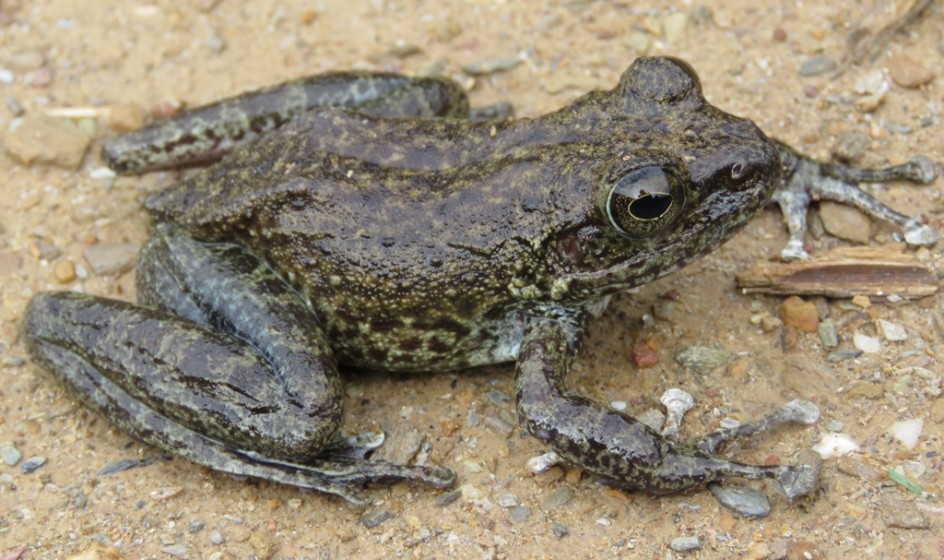

Mahabharat Torrent Frog
Promoting eco-clubs and field survey to initiate conservation of threatened Mahabharat Torrent Frog in central Nepal
The Mahabharat Torrent Frog (Amolops mahabharatensis) is a recently discovered species native to the mountain streams of Nepal. Listed as Vulnerable on the IUCN Red List of Threatened Species, it faces significant threats, particularly from habitat loss and overexploitation. Found in subtropical riverine ecosystems, the frog is particularly sensitive to changes in its environment and its populations are declining due to human activities such as deforestation and the collection of frogs for food and medicine. The practice of 'paha hunting', which is common in the mountainous regions, is particularly harmful as it involves both recreational hunting and consumption. This practice disrupts the frog's reproductive cycle, contributing to its rapid decline.
In addition to over-hunting, Amolops mahabharatensis is not protected within any designated conservation area, leaving its populations vulnerable to further decline. The species' dependence on fast-flowing rivers, where tadpoles cling to rocks, makes it highly vulnerable to changes in water quality and habitat fragmentation. With limited conservation action to date, this species is in urgent need of targeted conservation efforts.
Led by Pooja Paudel of the Environment Protection and Study Centre, the project aims to gather vital data on the species and develop long-term conservation solutions. The first objective is to establish baseline ecological data by training local students in fieldwork so that they can help assess the frogs' habitats. The project will establish eco-clubs in two schools in the Hattibang area, where students will be trained in habitat analysis, fostering a new generation of conservation advocates.
In addition, a survey of 200 local households will be conducted to understand community attitudes towards frog collection. This ethnographic study will help to identify the cultural significance of frog hunting and inform strategies to reduce its impact on frog populations. Rather than trying to stop hunting altogether, the project will promote sustainable practices by encouraging frog collection only during non-breeding periods. This approach will help protect the species at critical times in their life cycle.
Ultimately, the project will lay the foundations for effective conservation by combining scientific research with community engagement, promoting sustainable practices that balance local traditions with the need to protect wildlife.
Project info
|
Species |
Common name |
|
|
|
Threats |
|
|
|
|
Measures |
|
|
|
|
Partners (implementing / collaborating) |
|
|
|

Partner
